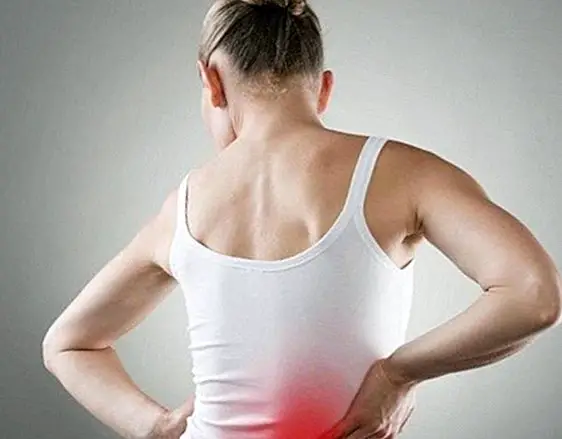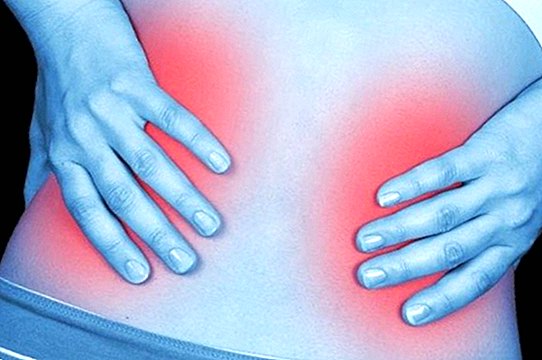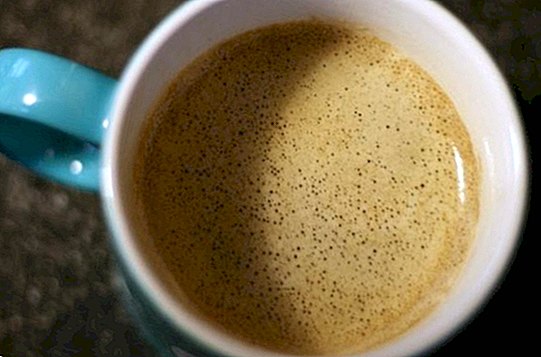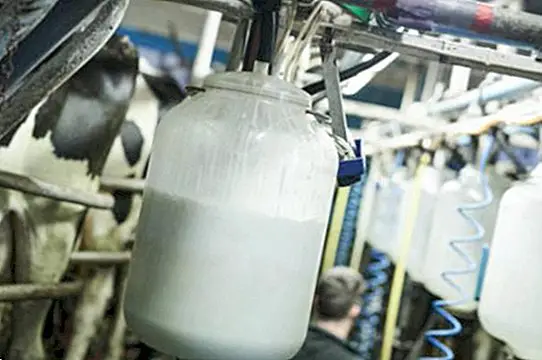How to differentiate kidney pain from low back pain and what to do to relieve them
Throughout the day we can suffer different pains and discomfort as a result of certain conditions, disorders or diseases, or even simply because of having a bad posture when working or studying. In this sense we must differentiate between muscular or joint pains, those produced by some more internal pathology. However, depending on the location it can be very difficult to know how to differentiate them.
This is what happens, for example, with Kidneys painand with him lumbago pain. It is quite common to confuse them especially when the pain caused by the kidneys is not really as sharp, intense and strong as it is usually in most cases. And, above all, this confusion occurs because it is common for both pains to be located more or less in the same location.

As you surely know, the kidneys are two bean-shaped organs no bigger than the fist of a child's hand. Under normal conditions they can measure 13 centimeters long by 8 centimeters wide. And among other important functions of the kidneys They are responsible for filtering the blood and eliminating through urine all those toxins and waste products that our body has produced and accumulated.
In fact, did you know that every minute goes through the kidneys around 1 liter of blood? What's more, every day about 1,600 liters of blood passes through them, being able to completely purify the blood of our body every 50 minutes.
The kidneys are located in the back, specifically under the rib cage, one on each side (left and right). However, the right kidney is somewhat lower than the left because it is located under the liver. Therefore when we feel pain in the area of the lower back we tend quickly to rush into the self-diagnosis, it is very common to make mistakes thinking that the kidney can hurt us when in reality it is a lumbago or low back pain.
Lumbar or kidney pain?
The truth is Low back pain is extremely frequent and is usually associated with some renal pathology, but also usually arise as a result of some muscle problem.
When we have kidney pain, it is common for the pain to appear suddenly without having previously had any sudden movement or situation that could have caused its appearance (for example, carrying too much weight, maintaining a bad posture when sitting for a long time ...), also characterized as being very intense and constant, so much that it can cause nausea and vomiting, as well as fever.
This is what happens, for example, with nephritic colic, one of the most common causes of kidney pain. This pain arises as a result of the formation of kidney stones - kidney stones-, especially due to the infection they produce inside the urinary system.

But nevertheless, the pain of low back pain is that which is located in the area of the lower back and that gets worse when we bend down, lasts less than 4 weeks and is relieved by the application of heat and therapeutic massage.
Useful tips for relieving back pain and kidney pain
When it comes to following some useful tips and tricks to reduce the most intense and painful symptoms of lumbago or kidney pain, it is essential to keep in mind that the steps to follow will be different depending on whether it is one condition or another:
- In case of lumbar pain caused by lumbago or lumbago: unlike what you think of rest is not at all advisable, being much better to try to stay active to the best of our ability. It is necessary to stimulate circulation, and for that there is nothing better than getting up and walking 30 minutes every 3 hours.
- In case of kidney pain: it is necessary to find out the house, although it is true that kidney pain is much more easily distinguishable from low back pain because it tends to be more intense and constant. If for example the pain is due to a nephritic colic it is also common for other symptoms to arise such as fever, nausea and vomiting. Analgesics can help relieve pain until the stone or stone is expelled.
As we see, although it is common to confuse both pains in case of doubts, or of very serious and intense symptoms, it is evident that the key is to go quickly to the doctor or the emergency center closest to where we are. This article is published for informational purposes only. It can not and should not replace the consultation with a Physician. We advise you to consult your Trusted Doctor. ThemesKidneys


